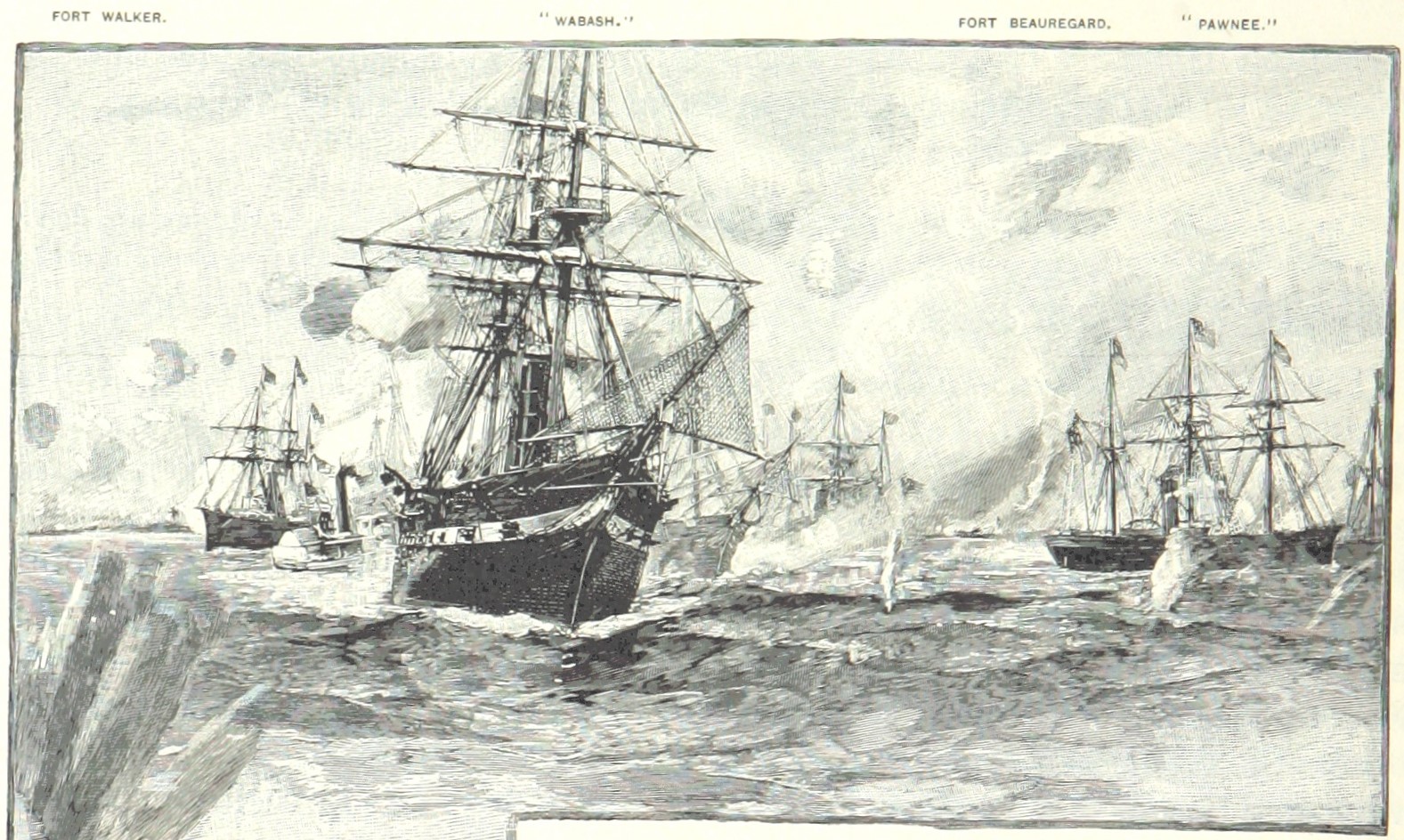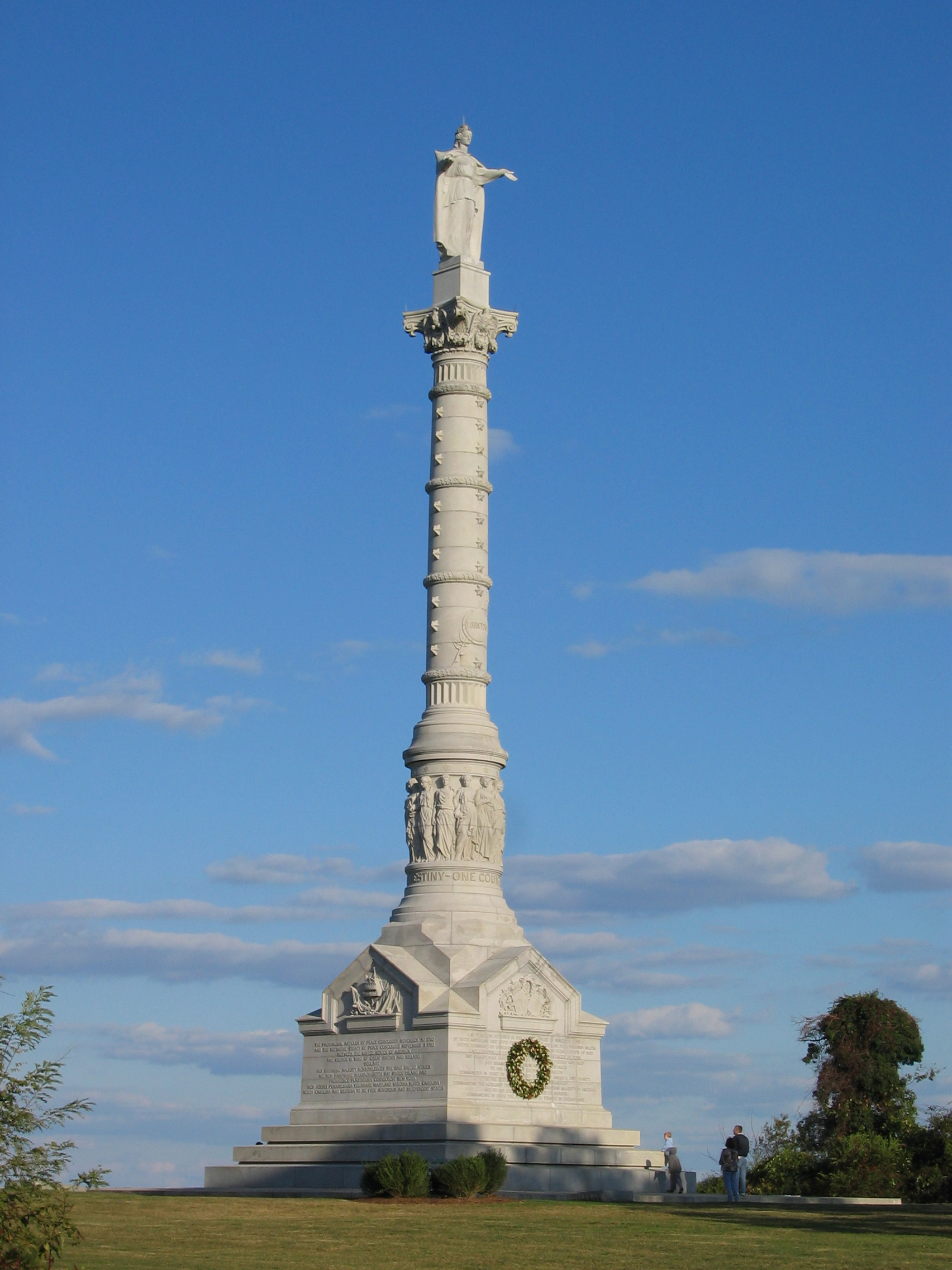|
Foxhall A. Parker Jr.
Foxhall Alexander Parker Jr. (August 5, 1821 – June 10, 1879) was an officer in the United States Navy during the American Civil War and became one of the founders of the United States Naval Institute. Biography He was born in New York on August 5, 1821, the son of Foxhall A. Parker Sr. and Sarah Jay Bogardus (born 1794), daughter of Robert Bogardus (1771–1841). Parker was appointed a midshipman March 11, 1837. He was attached to the West Indian Squadron, then transferred to the Philadelphia Naval School, graduating in 1843. In 1842, he served under his father, Foxhall A. Parker Sr., in ''Constitution''. He also served under his father in '' Brandywine''. On September 21, 1850, he was commissioned lieutenant. He served against the Florida Indians, on the Great Lakes, the Mediterranean, the Pacific, and on various coast surveys. From 1861 to 1862, he was executive officer of the navy yard at Washington, D.C. During the Civil War, he cooperated with the Army of the Potomac, ... [...More Info...] [...Related Items...] OR: [Wikipedia] [Google] [Baidu] |
New York City
New York, often called New York City or NYC, is the List of United States cities by population, most populous city in the United States. With a 2020 population of 8,804,190 distributed over , New York City is also the List of United States cities by population density, most densely populated major city in the United States, and is more than twice as populous as second-place Los Angeles. New York City lies at the southern tip of New York (state), New York State, and constitutes the geographical and demographic center of both the Northeast megalopolis and the New York metropolitan area, the largest metropolitan area in the world by urban area, urban landmass. With over 20.1 million people in its metropolitan statistical area and 23.5 million in its combined statistical area as of 2020, New York is one of the world's most populous Megacity, megacities, and over 58 million people live within of the city. New York City is a global city, global Culture of New ... [...More Info...] [...Related Items...] OR: [Wikipedia] [Google] [Baidu] |
Philadelphia Naval School
The Philadelphia Naval Asylum is a complex of buildings at Gray's Ferry Avenue in Philadelphia, Pennsylvania. Built in 1827 as a hospital, it later housed the Philadelphia Naval School, served as a home for retired sailors for the United States Navy from 1834 to 1976, and was ultimately redeveloped as luxury condominiums. The site was placed on the National Register of Historic Places and designated a National Historic Landmark in 1971, primarily for its architecture. Set on more than , the campus includes three buildings designed by architect William Strickland that are considered some of the best examples of Greek Revival architecture in the United States: Biddle Hall (the 1833 main building), the surgeon's residence and the governor's residence. For seven years, from 1838 until 1845, the campus housed the Philadelphia Naval School, a precursor to the United States Naval Academy. Beginning in 1838, midshipmen approaching examinations for promotion were assigned to the school f ... [...More Info...] [...Related Items...] OR: [Wikipedia] [Google] [Baidu] |
USS Wabash (1855)
USS ''Wabash'' was a steam screw frigate of the United States Navy that served during the American Civil War. She was based on the same plans as . Post-war she continued to serve her country in European operations and eventually served as a barracks ship in Boston, Massachusetts, and was sold in 1912. Pre-Civil War service ''Wabash''—the first U.S. Navy ship to bear that name—was laid down on May 16, 1854 by the Philadelphia Navy Yard; launched on October 24, 1855, sponsored by Miss Pennsylvania Grice; and commissioned there on August 18, 1856, Captain Frederick K. Engle in command. ''Wabash'' departed Philadelphia, Pennsylvania on September 7, 1856, stopping at Portsmouth, New Hampshire, to embark President Franklin Pierce for passage to Annapolis, Maryland. She arrived at New York on October 23, 1856, sailing on November 28, 1856 to become flagship of Commodore Hiram Paulding's Home Squadron. The squadron was instrumental in foiling the expedition against Nicaragua under ... [...More Info...] [...Related Items...] OR: [Wikipedia] [Google] [Baidu] |
Yorktown, Virginia
Yorktown is a census-designated place (CDP) in York County, Virginia. It is the county seat of York County, one of the eight original shires formed in colonial Virginia in 1682. Yorktown's population was 195 as of the 2010 census, while York County's population was 66,134 in the 2011 census estimate. The town is most famous as the site of the siege and subsequent surrender of General Charles Cornwallis to General George Washington and the French Fleet during the American Revolutionary War on October 19, 1781. Although the war would last for another year, this British defeat at Yorktown effectively ended the war in North America. Yorktown also figured prominently in the American Civil War (1861–1865), serving as a major port to supply both northern and southern towns, depending upon who held Yorktown at the time. Yorktown is one of three sites of the Historic Triangle, which also includes Jamestown and Williamsburg as important colonial-era settlements. It is the eastern te ... [...More Info...] [...Related Items...] OR: [Wikipedia] [Google] [Baidu] |
Wilmington, Delaware
Wilmington ( Lenape: ''Paxahakink /'' ''Pakehakink)'' is the largest city in the U.S. state of Delaware. The city was built on the site of Fort Christina, the first Swedish settlement in North America. It lies at the confluence of the Christina River and Brandywine Creek, near where the Christina flows into the Delaware River. It is the county seat of New Castle County and one of the major cities in the Delaware Valley metropolitan area. Wilmington was named by Proprietor Thomas Penn after his friend Spencer Compton, Earl of Wilmington, who was prime minister during the reign of George II of Great Britain. At the 2020 census, the city's population was 70,898. The Wilmington Metropolitan Division, comprising New Castle County, Delaware, Cecil County, Maryland and Salem County, New Jersey, had an estimated 2016 population of 719,887. Wilmington is part of the Delaware Valley metropolitan statistical area, which also includes Philadelphia, Reading, Camden, and other urban are ... [...More Info...] [...Related Items...] OR: [Wikipedia] [Google] [Baidu] |
USS Mahaska (1861)
The first USS ''Mahaska'' was a wooden, double-ender, sidewheel steamer of the third rate in the United States Navy during the American Civil War. She was named for Ioway Chief Mahaska. ''Mahaska'' was built at the Portsmouth Navy Yard, Kittery, Maine, for $130,001.68; launched 10 December 1861 and commissioned 5 May 1862, Lt. Norman H. Farquhar in command. ''Mahaska'' sailed from Portsmouth 15 May 1862, reporting shortly thereafter for duty in the rivers flowing into Chesapeake Bay. On 20 June she engaged the Confederate batteries along the Appomattox River and on 1 November destroyed entrenchments at West Point, Virginia. Continuing her patrols into the next year, she captured the schooner ''General Taylor'' in Chesapeake Bay 20 February 1863. Moving south later in the year, she joined in the blockade of Charleston and participated in the attacks on the forts and batteries in that harbor: Fort Wagner, 8 and 18 August; Morris Island, 13 to 17, and 20 August; and Fort Sumter, ... [...More Info...] [...Related Items...] OR: [Wikipedia] [Google] [Baidu] |
Mississippi Flotilla
The Mississippi River Squadron was the Union brown-water naval squadron that operated on the western rivers during the American Civil War. It was initially created as a part of the Union Army, although it was commanded by naval officers, and was then known as the Western Gunboat Flotilla and sometimes as the Mississippi Flotilla. It received its final designation when it was transferred to the Union Navy at the beginning of October 1862. History American Civil War The squadron was created on May 16, 1861, and was controlled by the Union Army until September 30, 1862. John Rodgers was the first commander of the squadron and was responsible for the construction and organization of the fleet. Flag Officer Andrew H. Foote relieved Rodgers and encouraged the army commander in the west, Major General Henry W. Halleck, to authorize an expedition down the Tennessee River against Fort Henry. Operating in conjunction with Ulysses S. Grant's Army of the District of Cairo, Foote sub ... [...More Info...] [...Related Items...] OR: [Wikipedia] [Google] [Baidu] |
Andrew H
Andrew is the English form of a given name common in many countries. In the 1990s, it was among the top ten most popular names given to boys in English-speaking countries. "Andrew" is frequently shortened to "Andy" or "Drew". The word is derived from the el, Ἀνδρέας, ''Andreas'', itself related to grc, ἀνήρ/ἀνδρός ''aner/andros'', "man" (as opposed to "woman"), thus meaning "manly" and, as consequence, "brave", "strong", "courageous", and "warrior". In the King James Bible, the Greek "Ἀνδρέας" is translated as Andrew. Popularity Australia In 2000, the name Andrew was the second most popular name in Australia. In 1999, it was the 19th most common name, while in 1940, it was the 31st most common name. Andrew was the first most popular name given to boys in the Northern Territory in 2003 to 2015 and continuing. In Victoria, Andrew was the first most popular name for a boy in the 1970s. Canada Andrew was the 20th most popular name chosen for mal ... [...More Info...] [...Related Items...] OR: [Wikipedia] [Google] [Baidu] |
Fort Dahlgren
A fortification is a military construction or building designed for the defense of territories in warfare, and is also used to establish rule in a region during peacetime. The term is derived from Latin ''fortis'' ("strong") and ''facere'' ("to make"). From very early history to modern times, defensive walls have often been necessary for cities to survive in an ever-changing world of invasion and conquest. Some settlements in the Indus Valley civilization were the first small cities to be fortified. In ancient Greece, large stone walls had been built in Mycenaean Greece, such as the ancient site of Mycenae (famous for the huge stone blocks of its 'cyclopean' walls). A Greek '' phrourion'' was a fortified collection of buildings used as a military garrison, and is the equivalent of the Roman castellum or English fortress. These constructions mainly served the purpose of a watch tower, to guard certain roads, passes, and borders. Though smaller than a real fortress, they acte ... [...More Info...] [...Related Items...] OR: [Wikipedia] [Google] [Baidu] |





